This question has been on my mind for quite some time. One of the advantages a Buyer’s Agent gets is market feedback in real time. Unlike those who have to wait it out for delayed data reports, we are fielding buyer calls and getting a gauge of sentiment from the coal face, every single day.
In 2020 we did witness an enormous shift for buyer interest in the regional markets. News story after news story documented the desire by many to escape the lockdowns, embrace cleaner living and to carve out a new life for themselves in a region.
For many, this was true.
But what we have found at our coal face hinges on space more than escapism. In 2020, our search engines reported a marked increase in searches for study or three bedrooms. The prevalence of increased bedroom count from new clients was not lost on us, either.
It felt like every typical two bedroom home buyer increased their minimum required bedroom count to three, and every three bedroom home buyer now required a fourth bedroom, etc.
Taking into account the dramatic price differential between larger houses in the cities versus, the regions, it is of little wonder that our internal migration was so palpable in 2020.
The question is; was it an escape from the city? Or merely a quest to find a viable option within a certain budget?
This is a question I’ve pondered for a long time, and with gratitude to Tim Lawless and CoreLogic following our REBAA conference, we have some interesting CoreLogic data to help ponder this question.
The national shift from units to houses is superbly illustrated in this chart below. Buyer demand has elevated prices for houses at a disproportionate rate. Houses do typically outperform units, but not usually at this magnitude.
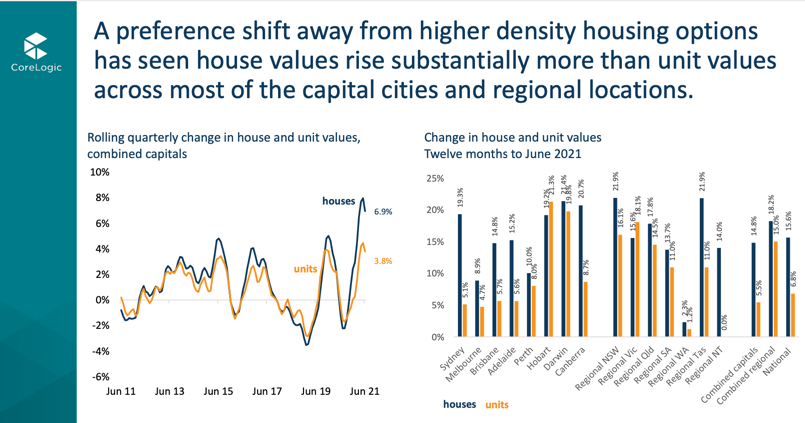
The regions, (on a national average basis) certainly did give the capital cities a run for their money in 2020, and while the gap is reducing, many regions still remain tightly held and in strong demand.
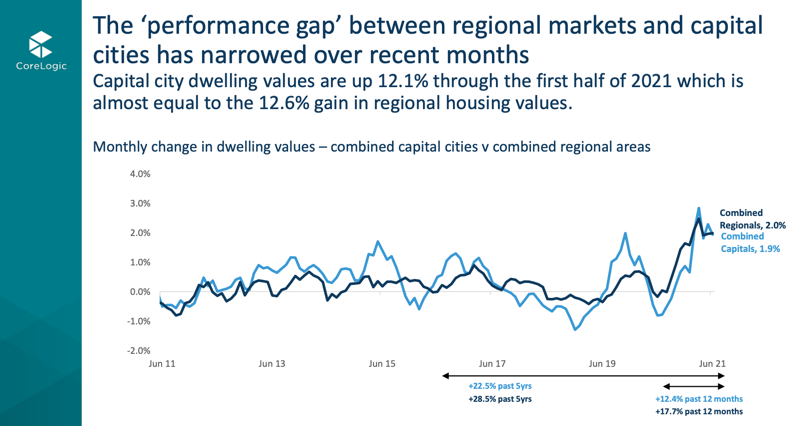
These two charts are interesting, particularly Melbourne and regional Victoria, which sustained different lockdown measures during the grim months of 2020. It does question the sentiment and intent of the regional migration buyers, but it doesn’t address whether the move was based on a desire to live in a region, or the quest for a larger dwelling.
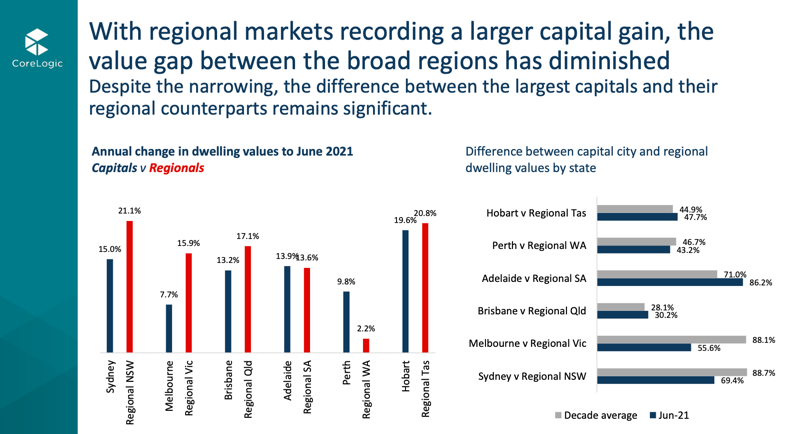
Interestingly, this table doesn’t feature a single Victorian region in the top ten, and coming in at number eleven is the Mornington Pensinsula; a region offering rail commute options and a drive to the CBD that spans around an hour. Hardly an escape to a region, but arguably a desire for seaside life.
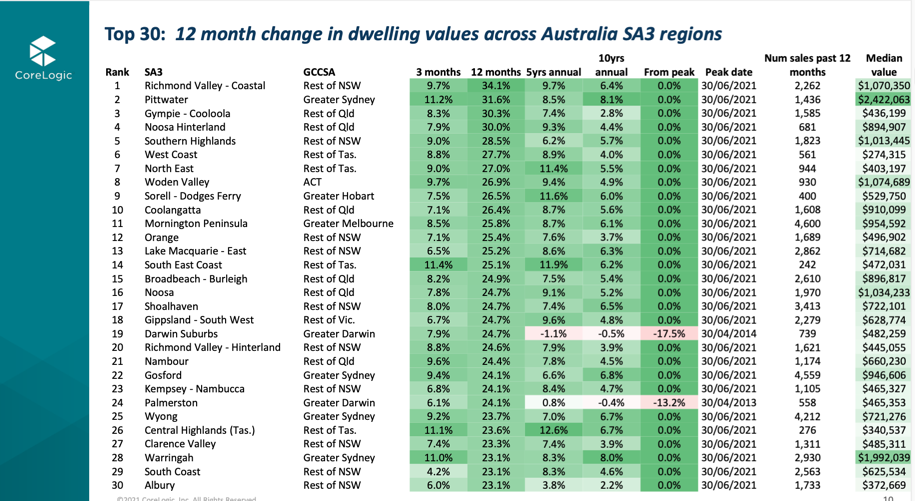
Finance commitment gives us some insight into the mix of home buyers and investors; with the first home buyers still well and truly demonstrating their participation in the market.
Could have a large proportion of FHB’s purchased in the regions for affordability reasons?
We believe so, based on our own enquiry and activity with this collective.
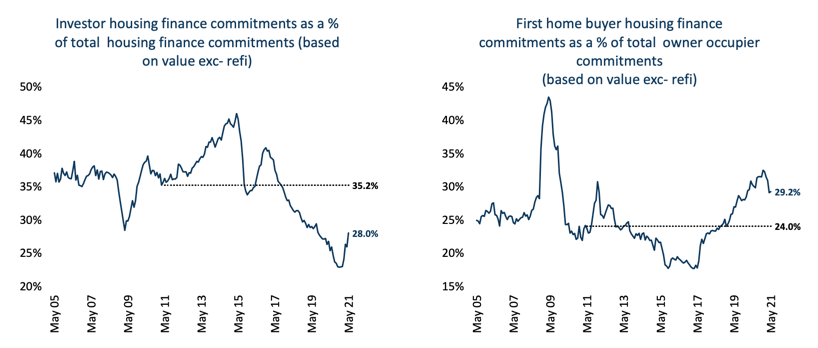
This charge demonstrates exactly what happened in our cities and regions, with the first chart a near-perfect mirror image. People did escape from the city, indeed.
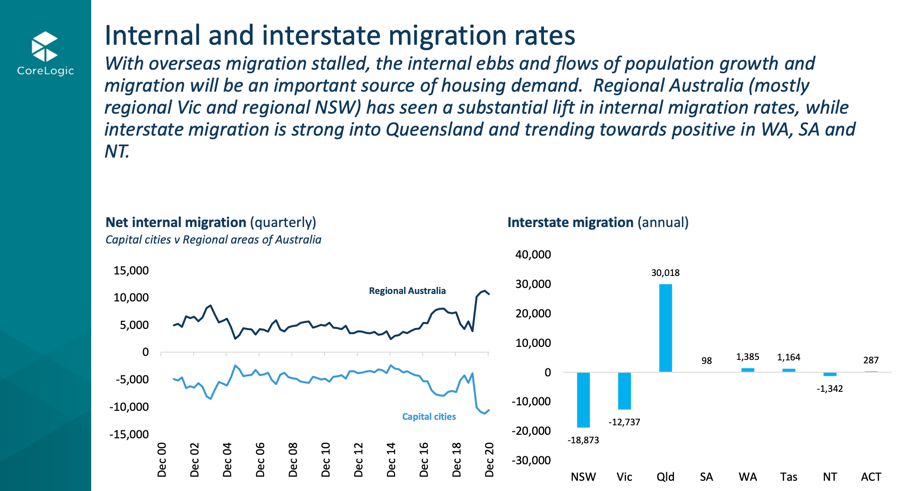
Our housing preferences may have some elasticity as the pain of COVID-19 fades, but while work from home remains a popular option and uptake, our requirement for a bigger dwelling may be here to stay.

Affordability constraints for many will keep regional migration a genuine option for city dwellers in search of their Great Australian Dream.
Special credit to CoreLogic for the data.
REGISTER TO OUR NEWSLETTER
INFORMATION
CONTACT US
1A/58 ANDERSON STREET,
YARRAVILLE VIC 3013
0422 638 362
03 7000 6026
CATE@CATEBAKOS.COM.AU
